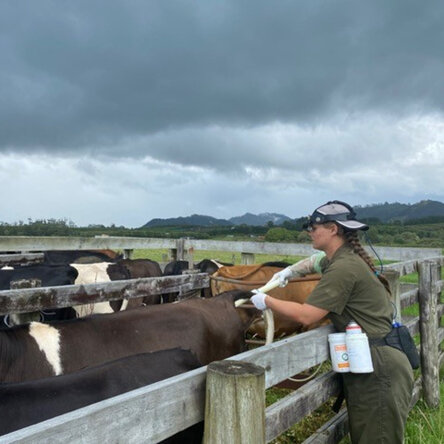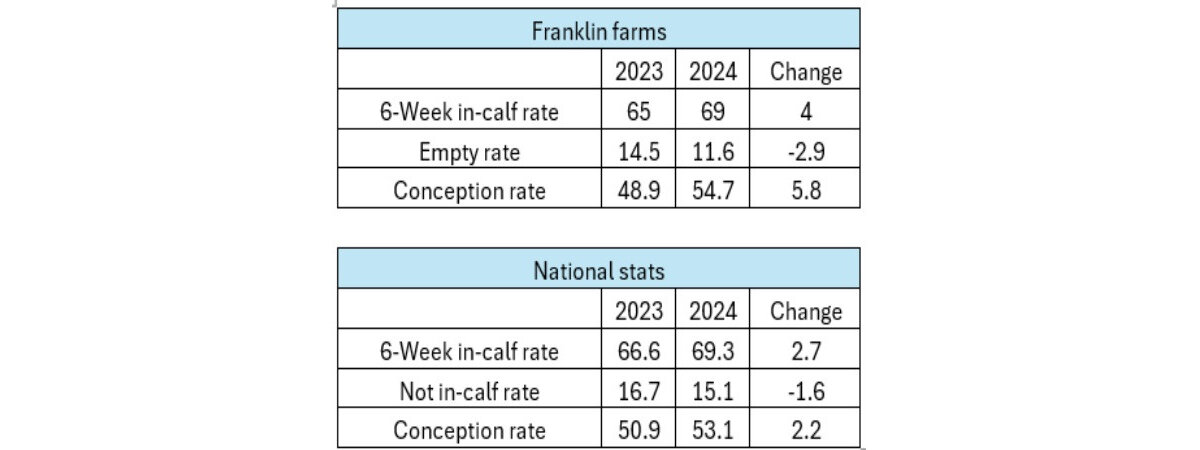Franklin Vets
Franklin Vets - excellence in veterinary care for dairy, farming, lifestyle, equine and household pets. BESTPRACTICE ACCREDITED NZ.
Your account is powered by Storbie. To edit your profile visit my.storbie.com
Your account is powered by Storbie. To edit your profile visit my.storbie.com

The 6-week in-calf rate across the practice increased 4% on average compared to the previous season. The 6-week in-calf rate is the main statistic for assessing the reproductive efficiency of herds. Your 6-week in-calf rate measures the percentage of eligible cows pregnant within the first six weeks of mating. Achieving a high 6-week in-calf rate is desirable as it ensures a tightly compact calving period, maximizing milk production and profitability.
Empty rate and not in-calf rate are both measures of cows that aren’t pregnant however, they are calculated slightly differently. Not in-calf rate will always be higher because it also includes cows that were present in the herd at the start of mating that have been sold/culled before pregnancy scanning took place. With an increase in the 6-week in-calf rate you would expect to see a decrease in empty/not in-calf rate, which we do. Empty rates were 2.9% lower this season compared to last season.
Conception rates increased by 5.8% on the previous season’s low. Improved conception rates are likely due to many farms being forced to milk once a day early in the season due to wet conditions. This meant cows were going into mating in better body condition, which is well shown to directly affect conception.
Though it might not feel like it, now is a great time to review your mating performance and create a plan going forward. Calving condition greatly affects mating body condition and to get cows in the correct calving condition starts with drying them off with enough
Dr Neil Murray BVSc Farm Vet, Paeroa
Franklin Vets - excellence in veterinary care for dairy, farming, lifestyle, equine and household pets. BESTPRACTICE ACCREDITED NZ.




